Ci-après le relais d'un article très complet du blog Ethnoflorence sur les arts du peuple santal.
This page could not be possible without the precious contribute of pictures by
Collection Musée de la Castre Cannes © photo Claude Germain.
CHRISTIAN LEQUINDRE
ROBERT BRUNDAGE PETALUMA CA
SANZA ARTS PREMIERS BRUXELLES
FREDERIC ROND PARIS
HERVE PERDIOLLE PARIS
A.M. COLLECTION SANATAN KAVADIYA
and text by ELIO REVERA BRESCI Arti delle Mani Nere
ETHNOFLORENCE
An online : Vocabulary of the Santali language by EDWARD LAVALLIN PUXLEY.
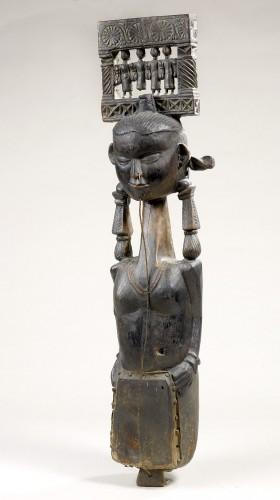
Courtesy of Collection Musée de la Castre, Cannes © Photo Claude Germain

Photo courtesy of Christian Lequindre.
Perché ci circondiamo di bellezza?
E perché questo circondarci non ci ha mai appagato, noi uomini, di ogni dove e di ogni tempo?
Per una semplice ed insieme cogente motivazione: perché ne abbiamo bisogno!
Guardo questo oggetto che cari amici hanno avuto l’ardire di porre sotto i miei occhi; l’ardire, perché conoscono la mia limitata cultura ed il mio sconfinato amore per le produzioni artistiche di un altro continente.
Ma la loro è una sfida vinta in partenza: questa straordinaria creazione, l’immagine di questa fanciulla dai seni puntuti e da un’ incredibile quanto armoniosa corolla, mi ha conquistato al primo sguardo.
Non ha importanza cosa sia.
Io ne ammiro le purissime forme, ancestrali, evocative, ardite e stupefacenti: ed i miei sensi sono appagati da quella Dea misteriosa e sublime….avita e sconosciuta: la dea della Bellezza che in ogni cultura ha ricevuto nomi diversi, ma dovunque ha lascito profondissima traccia di sé, col suo passo lieve ed incorporeo.
Elio Revera, socioanalista.
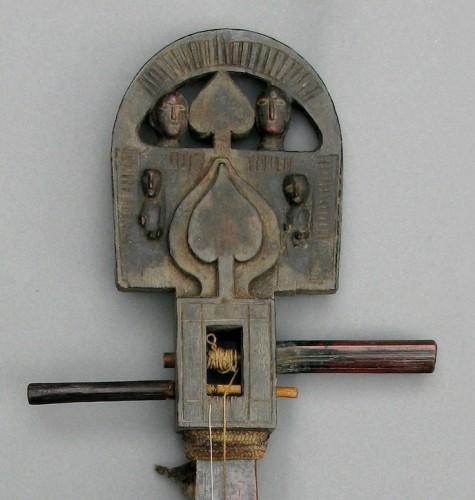
Photo courtesy of Robert Brundage.
The Santal carved their one stringed lutes sometimes in the shape of a woman, transfigurating the resonance of the instrument into rotundities known from Hindu sculpture and brought to the tribal level by simplifications and distortions demanded by the shape of the instrument.
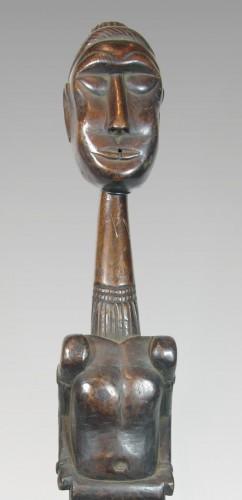
Photo courtesy of Frederic Rond.
The prophetic head with its far-seeing inlaid eyes, traversed at the back by the turning keyes as a kind of ear ornament, carried aloft on a neck of inordinate length,is a noble mask. Through its thin lipped mouth a god may speak.
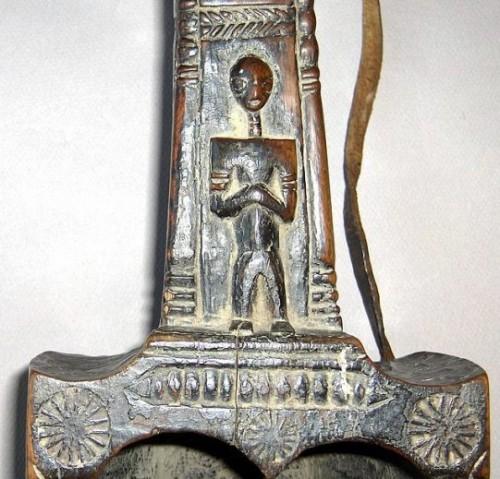
Photo Courtesy of Sanza Arts Premiers.
Sound and mask, the prophetic voice which speaks through mask and instrument,link auditory and visual experience in one manifestation of the numinous.
Resume from Stella Kramrisch (Unknown India Ritual Art in Tribe and Village)
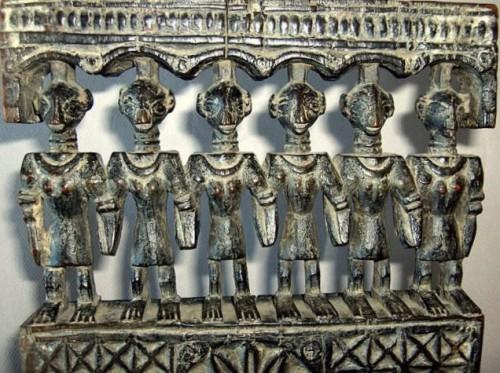
Photo courtesy of Sanza Arts Premiers.
The Santals believe in the magical powers of this musical instrument, a medium between the human beings and the supernatural.
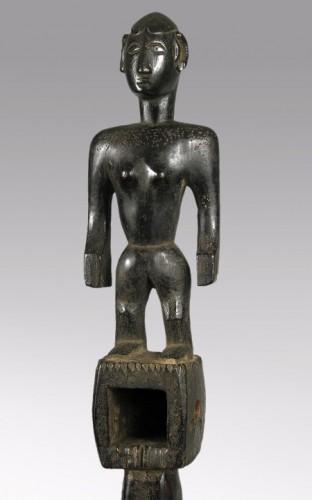
Photo courtesy of Christian Lequindre.
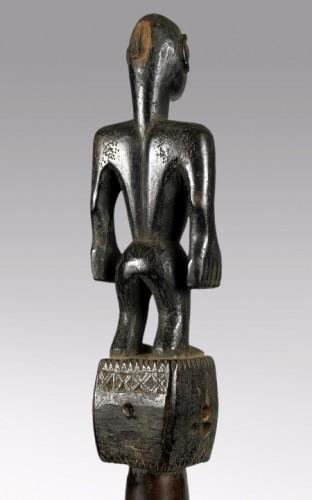
Photo courtesy of Christian Lequindre.
The Banam resume in its various parts the anatomy of an human being : head, ears, neck, chest and stomach.
The string is the most important part of the instrument, because it unites the other parts of the liute together, it's considered as the breadth of the Banam.

Photo Ethnoflorence.
The Head (Bonok) of the instrument represents the Space.
Neck (hatok) and chest (koram) are directly connected with the Respiration and represents the equivalent natural element of the Air.
The stomach (lac) represents the fire.
The ears (lutur) the ether.
The term banam means body and represents the earth.
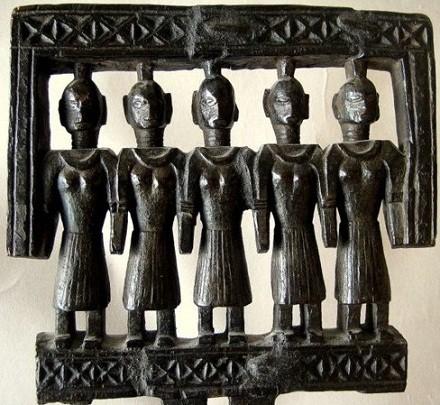
Photo Courtesy of Sanza Arts Premiers.
One oral Myth of the Santal told us the mithologyc origin of the Dhrodo Banam.
Once upon a time lived an old couple. They had seven sons and a daughter who was the youngest of all.
The sons used to go hunting and the sister cooked meals for them. Some time later the couple died.
All their sons and daughter came to a forest to live in the same way as they used to live earlier, the sister cooked the meals and looked after the house while the seven brothers went hunting.
One day while their sister was cutting sin arak (leaf-vegetable), one of her fingers got cut, and the blood of the wound got mixed with the vegetable.
She cooked it and served it to her brothers after their return. They found the vegetable delicious.
So they asked their sister how the vegetable became so tasty, and found that her blood had got mixed with it.
The eldest brother wondered that if her blood could make the food so delicious, how tasty would her flesh be.
So he decided to kill her and share her flesh with his brothers.
Her body was then cut in seven pieces and each brother received a piece.
Except the youngest brother, the other ate the sister's flesh, he went to a pond sadly with his share, the fish, the crab and all the other creatures of the place, seeing this asked him the reason of his sorrow.
The youngest brother narrated them the whole story, after that the creatures of the pond suggested him not to eat the flesh of his sister and instead to put it inside the mound of white ants.
Some year later, in the place grew a huge guloic tree.
It started to grow beautifull flowers and a melodious sound was heard from the tree.
A jugi who often used to come to the tree for picking up flowers heard this melodious sound and remained astonished.
One day he decided to cut a brunch from the magic tree and with them he constructed the first musical instrument the DHODRO BANAM.
(Text resumed from Santal Music Onkar Prasad 1985)
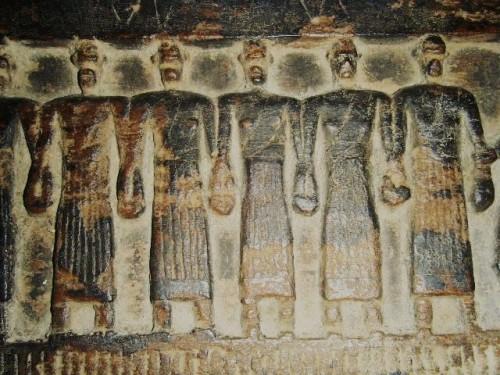
Photo Ethnoflorence.
The narrative typical carving of the panels, in low profile, it is characterized by human figures in combined front profile view, limbs at times overlapped in telling gestures and lively actions of spontaneously formed group, and are based roughly on one groundline in common, in a cursive notation of figures, human and animal, more valuable and surely less expert, but according to Stella Kramrisch somehow paralleling Egyptian reliefs.
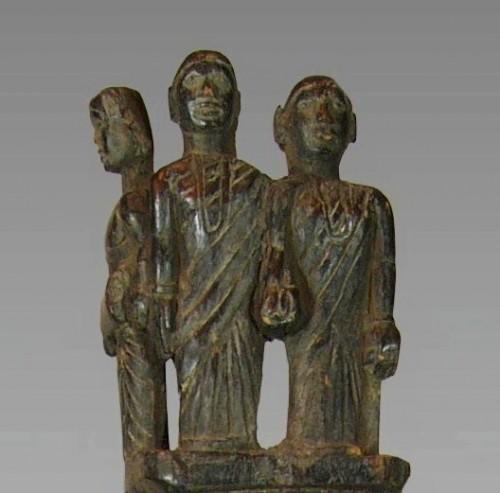
Photo courtesy of Frederic Rond.
Dancers and Musicians :
The Santal wedding litter is called RAHI and was made by tribal craftsmen themselves. The RAHI was created with a certain amount of ceremony. According to Verrier Elwin and Stella Kramrisch, when work was started, two pigeons were sacrificed ; when it was completed the couple sat on it and were carried to the central Manjhithan where more pigeons or a goat were offered. The activity of carving was part of the marriage rite, as was the procession of the mariage litter.
The themes :
The main subjects carved on the Rahi's panels are derived from the local ceremonies, such as marriages, the Miths of the Santal creation, the totems devoted to the twelve Santal clans, the Santal Hul or Santali rebellion of 1855, and especially the everyday life scenes. A part of these themes, it's common with the carved top of the Banam.
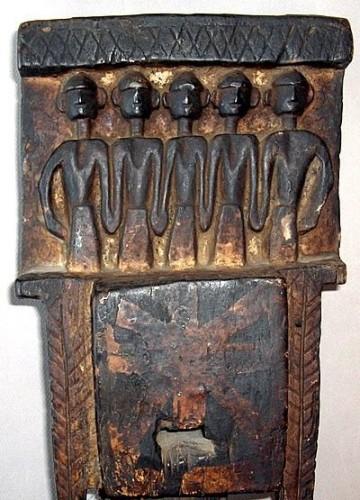
Photo Courtesy of Sanza Arts Premiers.

Photo courtesy of Sanza Arts Premiers.
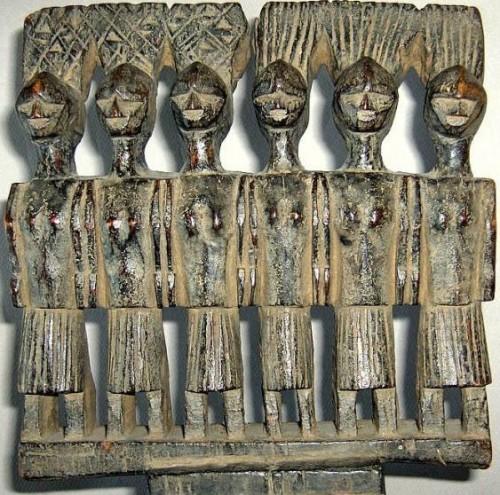
Photo courtesy of Sanza Arts Premiers.
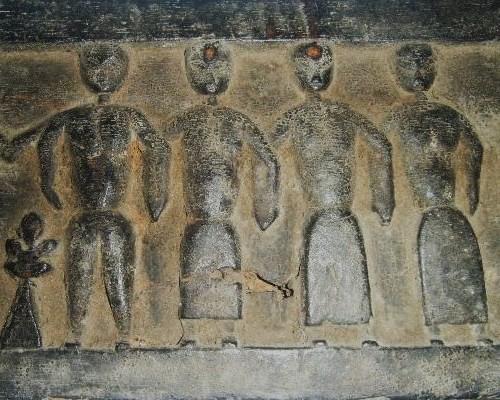
Photo Ethoflorence.
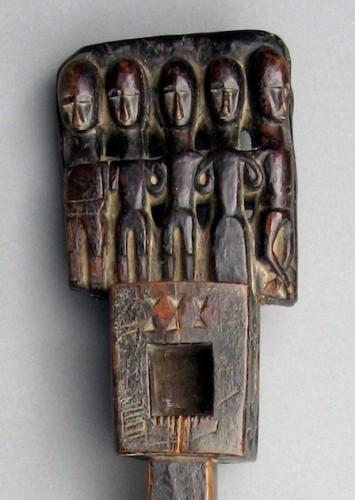
Photo courtesy of Robert Brundage.
The Santal traditionally accompanied many of their dances with two kind of drums the Tamak' and the Tumdak', the kettle-drum 'nagara' and the oboe 'shanai'. These musical traditions are reflects on the Banam lutes and Rahi panels iconography where the dancers are seldom accompanied by musicians too.
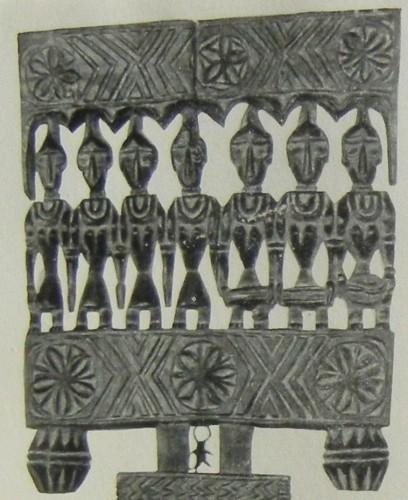
Picture from Tribal Art of Middle India 1951 by Verrier Elwin.
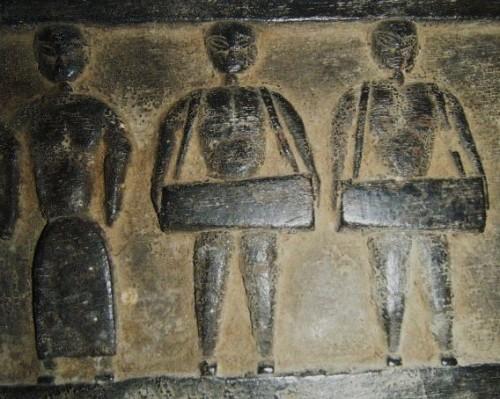
Photo Ethnoflorence.
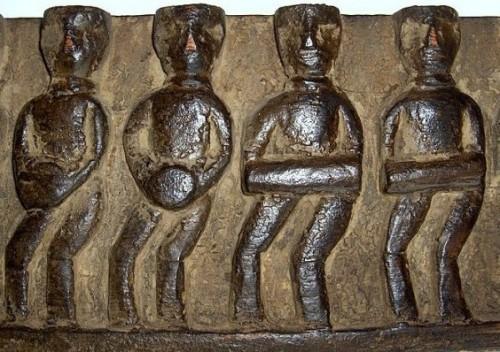
Photo courtesy of Sanza Arts Premiers.
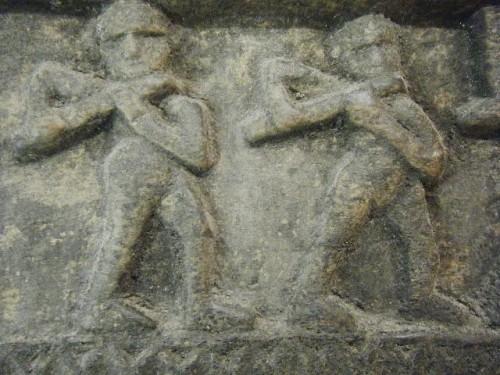
Photo courtesy of A. M.
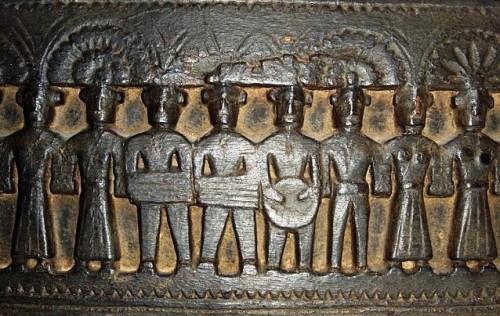
Photo courtesy of Sanza Arts Premiers.
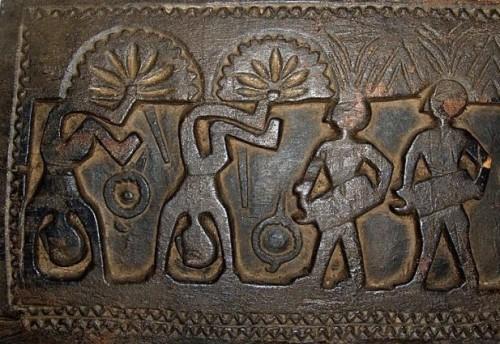
Photo courtesy of Sanza Arts Premiers.
Sometimes musicians and dancers are accompanied also by acrobatic perfomers.

Photo Ethnoflorence.
Horses, Horsemen and Elephants :
Another quite common iconography that we can find on the Rahi Panels is linked with the presence of elephants, horses and horsemen.
Sometimes these representations are linked with the marriage procession.
It's possible to find carved a similar iconography also on the top of the Banam.
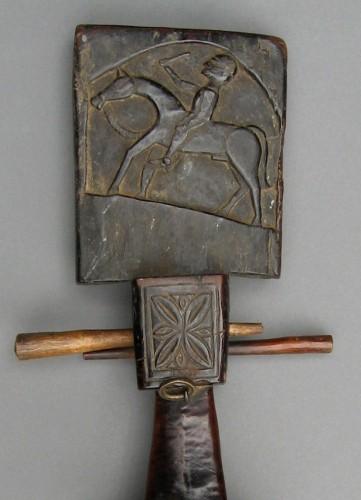
Photo courtesy of Robert Brundage.
Above, an exceptional iconography of a rider and horse on the back carved top of a banam lute.
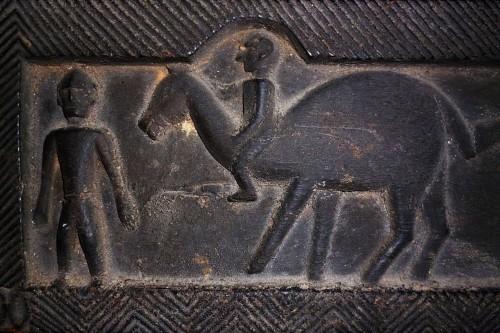
Photo courtesy of A. M.
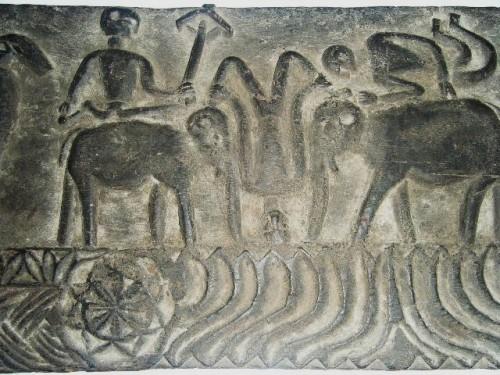
Photo Ethnoflorence.
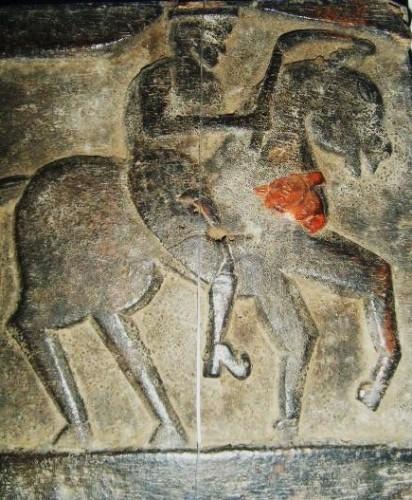
Photo Ethnoflorence.
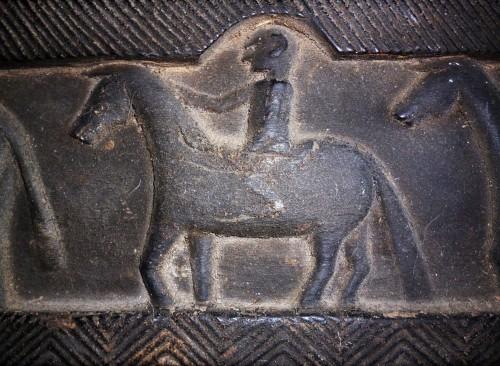
Photo courtesy of A.M.

Photo Ethnoflorence.
Sacro and Profano :
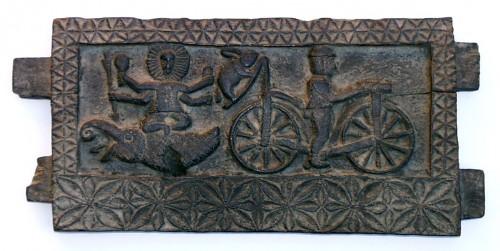
Photo courtesy of Robert Brundage.
A mix of subjects is the iconographic base of this very interesting panel.
Hunting Scenes :
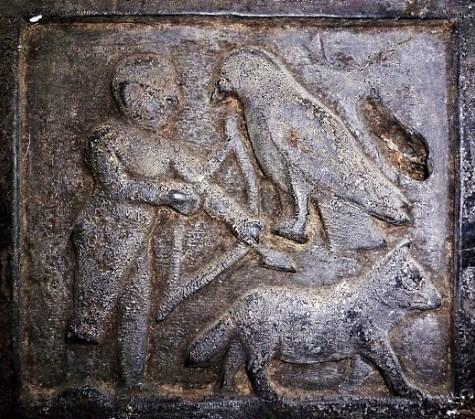
Photo Courtesy A. M.

Photo Courtesy A. M.
Santal Hut :
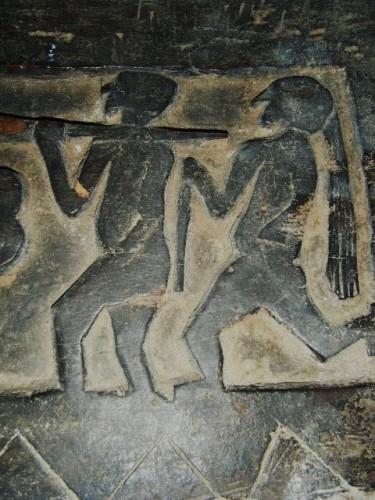
Photo Ethnoflorence.
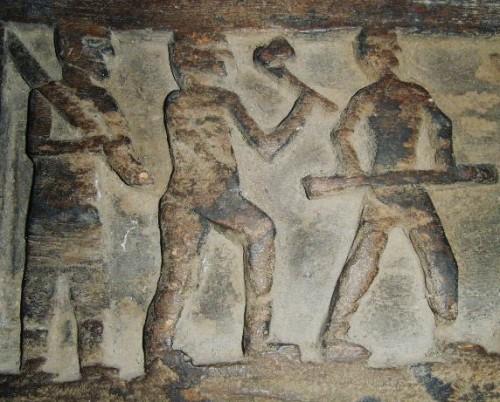
Photo Ethnoflorence.
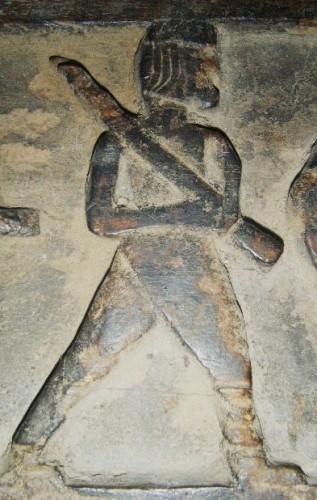
Photo Ethnoflorence.
Animalia and everyday life :

Photo courtesy Robert Brundage.

Photo courtesy Robert Brundage.
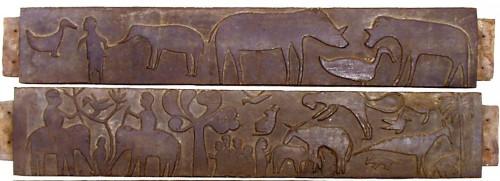
Photo courtesy Robert Brundage.
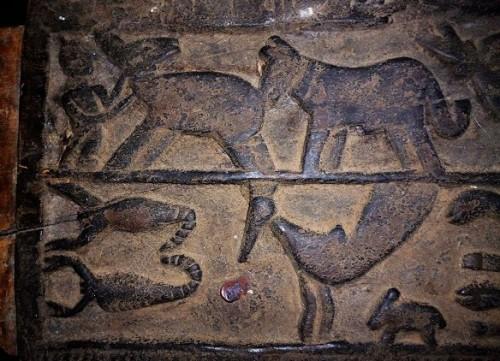
Photo courtesy A.M.
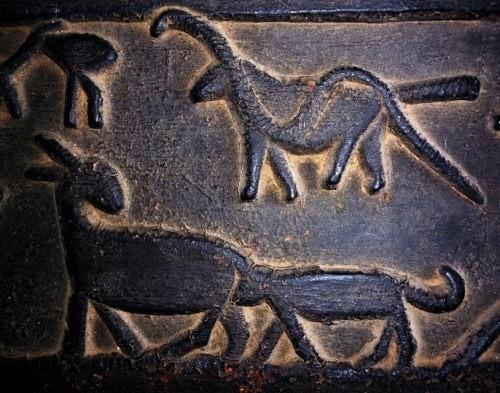
Photo courtesy of A. M.
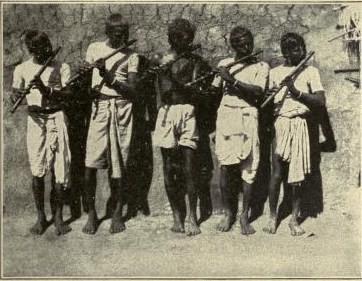
Sketches from Santalistan, Pederson, Mathew A. 1913.
http://archive.org/details/sketchesfromsant00pede
The flute held an important role in the music tradition of the Santal people.
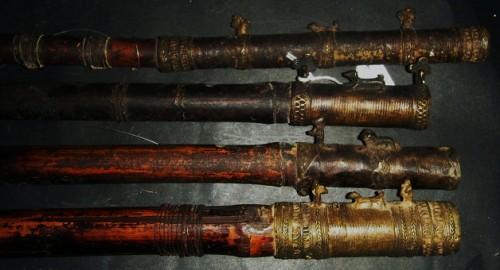
Photo Ethnoflorence.

Photo courtesy of Robert Brundage.
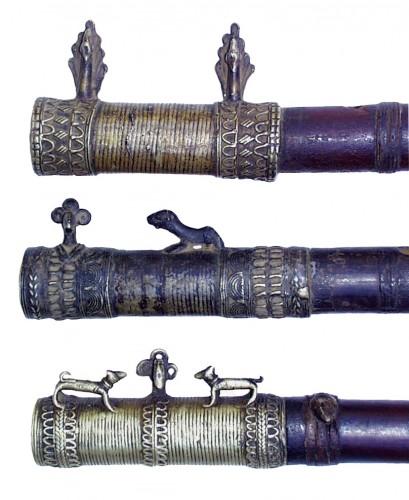
Photo courtesy of Robert Brundage.
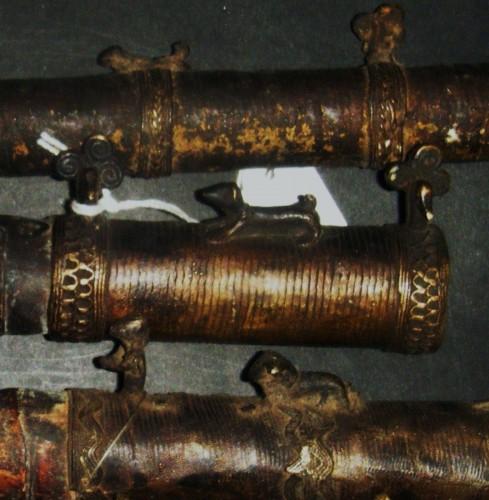
Photo Ethnoflorence.
Two flutes of this particulary rich tipology are present also in the collection of the Musee de la Castre of Cannes.
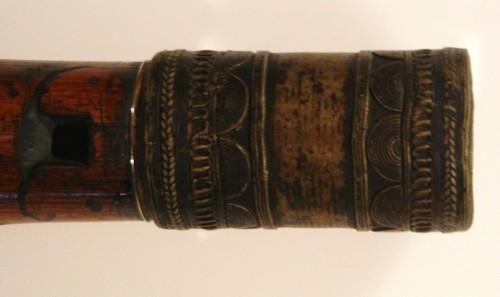
Detail of one of the Cannes flute.
Chador Badoni :
Puppet small wodden idol
Definition from
">
">
">
">A vocabulary of the Santali language by EDWARD LAVALLIN PUXLEY
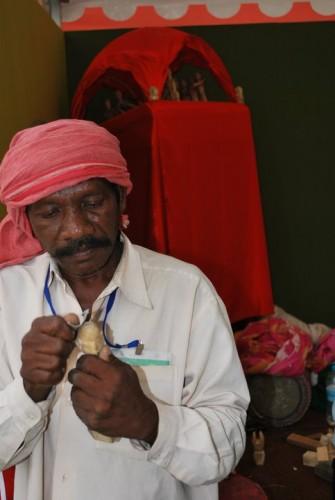
Photo courtesy of Sanatan Khavadiya.
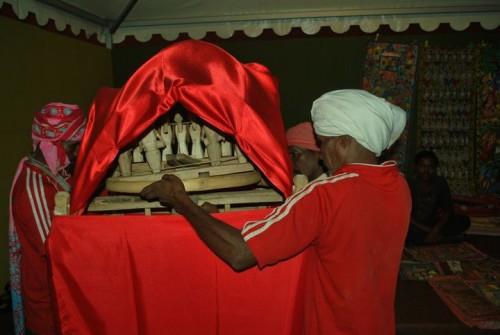
Photo courtesy of Sanatan Khavadiya.

Photo courtesy of Sanatan Khavadiya.
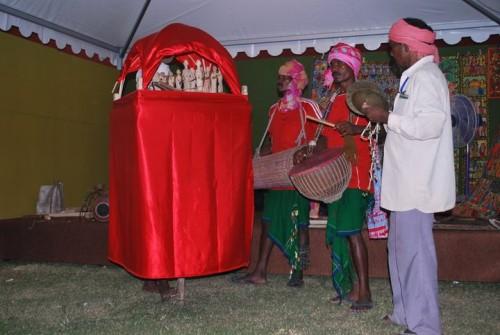
Photo courtesy of Sanatan Khavadiya.
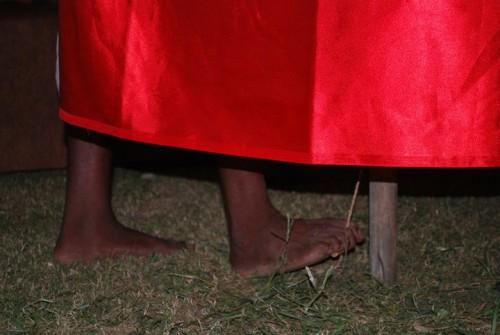
Photo courtesy of Sanatan Khavadiya.
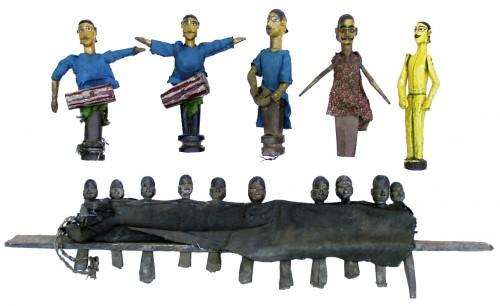
Photo courtesy of Robert Brundage.
Jadupatua :
jadu = magician ; patua –or chitrakar- = painter
Santal Parganas .State of Bihar, India.
Text and pictures courtesy of Herve Perdiolle.
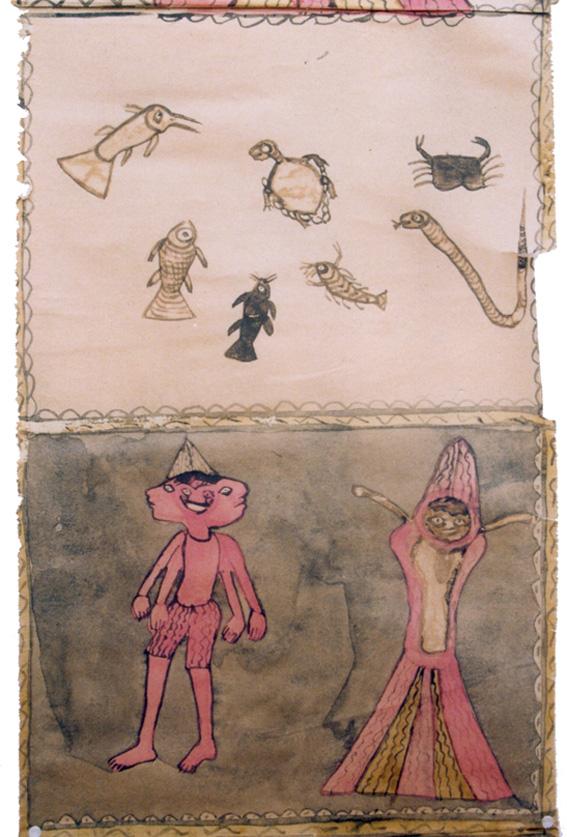
Creation of the world 1980.
The Jadu Patuas are painters and story tellers and go from village to village carrying their painted scrolls made of paper sheets sewn together with a bamboo stick on each extremity.
Jadu means "Magician".
The themes they represent on the scrolls are about a dozen . However, there is different interpretation for each theme. A Jadu Patua can, looking at one scroll, say different stories depending if his audience is Hindu, Muslim or Santal. This last ethnic group is the most important audience for the Jadu Patuas.
The Patuas live with the money that the villagers give them after listening to their stories. The fact that they are magicians give a special effect to their intervention because the villagers fear them.
One of the most revealing images of the Jadu Patuas'role (in the Santal community) is the,"Mritu pat" or "image of the deaths".
When somebody dies in a village near the Jadu Patua's one, the "artist magician" visits the family of the dead with a small and simple image (about 3 x 2 inches) which is supposed to represent the dead in a simple way.
Only the late person's pupil is missing.
Showing this image to the family, the Jadu Patua tells the story evoking the suffering of the dead whose soul is still trapped in hell.
The family then gives an offering to the Jadu Patua in order for him to intervene. The ritual for the Magician painter consists then to paint the dead's pupil in order to free his soul.
The principles developed by the Jadu Patuas are :
The Baha's feast
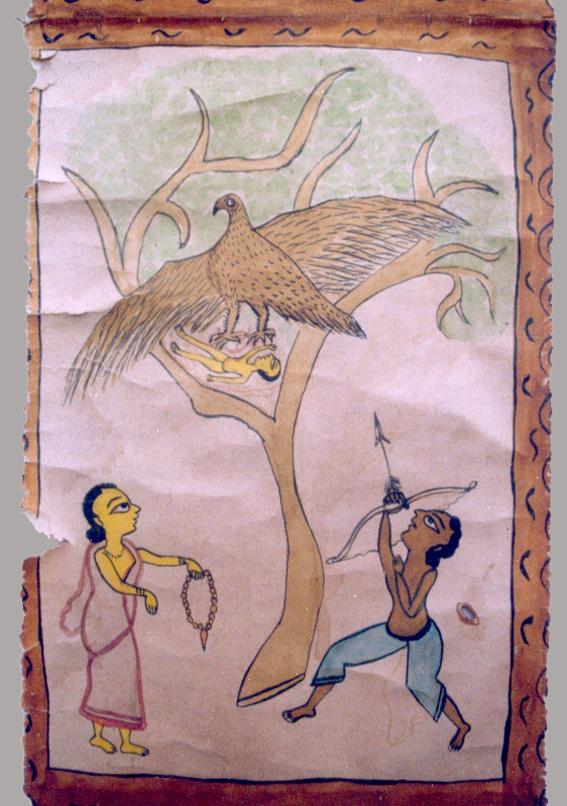
Anonyme, fête de Baha, 1980, couleurs végétales sur papier, 25x460 cm.
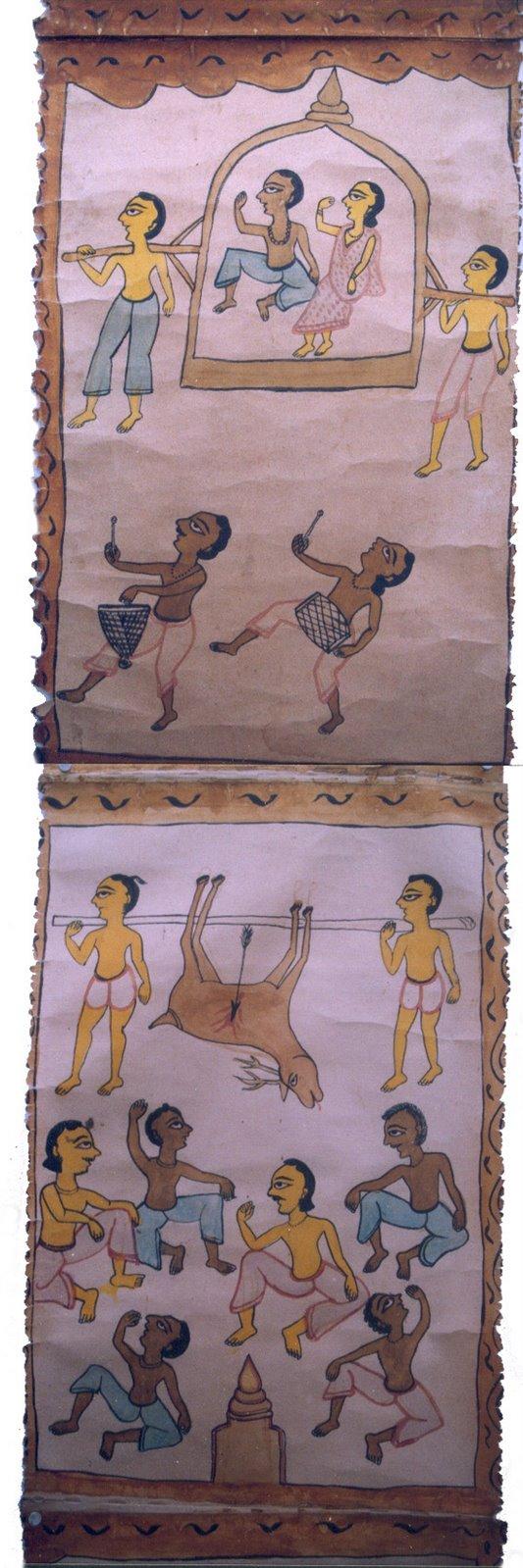
Anonyme, fête de Baha, 1980, couleurs végétales sur papier, 25x460 cm.
A strange mixture of Hindu and Santal myths showing a lot of festivities where tribal dances, sacrifices and drinking sessions scenes are mixed.
The creation of the world :

Anonyme, Création du monde, 1990, couleurs végétales sur papier, 20x420 cm.
where we can see the first human couple being born from the coupling of a goose and a gande.
The painting of Kali
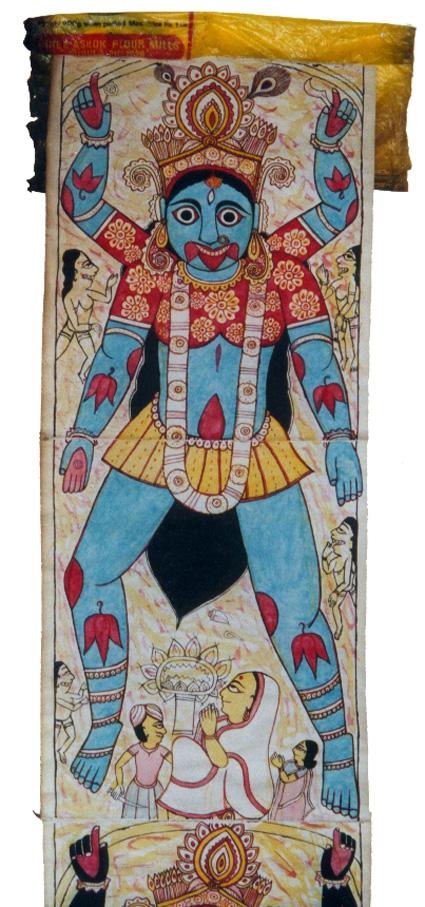
Anonyme, Kali pat, 1980, couleurs végétales sur papier, 30x240 cm, collection privée.
composed with 3 or 4 paper sheets only, showing Kali in her most terrifying aspects and a lot of scrolls about Yama, the god of hell (showing all the ill treatments, sometimes sexual, given by Yama and his servants to the dead who behaved badly during their lifetime).
It seems that the scarier the Jadu Patuas'style gets, the more highly he is regarded.
**
*

